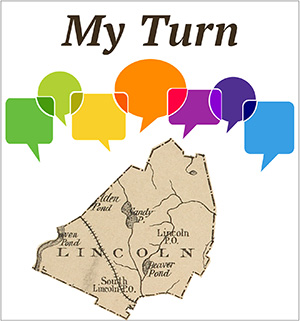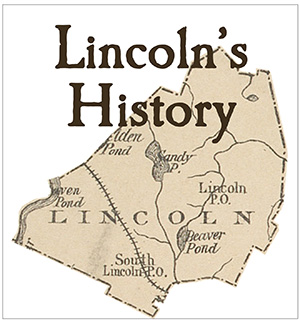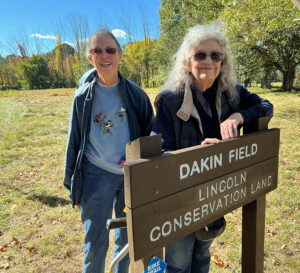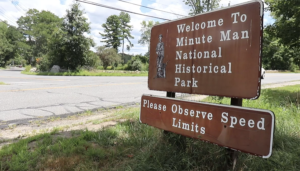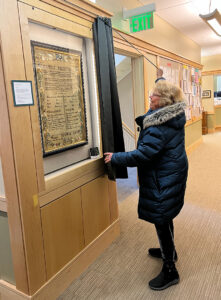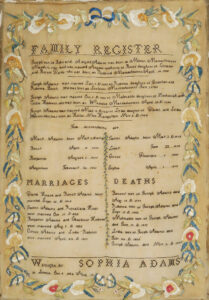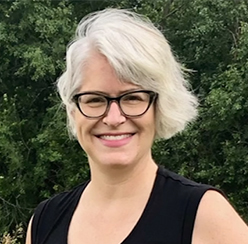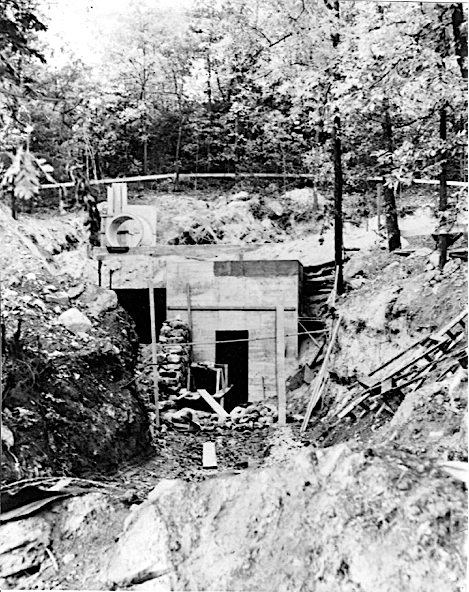By Kim Bodnar, Lincoln 250 Chair
On June 5, the Lincoln250 Planning Committee, along with the Lincoln Historical Society and the Historical Commission, hosted a reception for Lincoln’s Historical Homeowners (homes that were built on or before 1776). About 17 private homes in Lincoln qualify, along with public properties in Minute Man National Historical Park, Historic New England (Codman Estate), and Farrington Memorial. Twenty homeowners and representatives from Lincoln’s public properties shared the origin stories of these treasured historic homes.
The meeting began with an introduction of the Lincoln250 Planning Committee, formed by the Select Board in early 2023 to begin planning events, programs, and activities to celebrate the 250th anniversary of the Battles of Lexington and Concord and Lincoln’s role in these early days of the American Revolution. Andrew Glass, chair of the Historical Commission, provided background on Lincoln’s historic districts and the commission’s goal of preserving and protecting places significant to the history of the town. Finally, Sara Mattes, chair of the Historical Commission, offered a fascinating history of the Lincoln militia and Minute Men who lived in these historical homes, as well as the enslaved that were also present in Lincoln in April 1775.
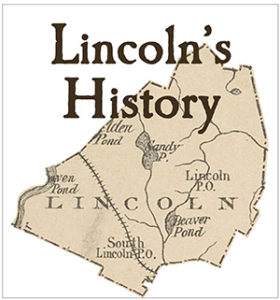 Wiggin, author of Embattled Farmers: Campaigns and Profiles of Revolutionary Soldiers from Lincoln, Massachusetts, 1775-1783, shared the following pieces of information:
Wiggin, author of Embattled Farmers: Campaigns and Profiles of Revolutionary Soldiers from Lincoln, Massachusetts, 1775-1783, shared the following pieces of information:
- Lincoln’s most prominent citizen of that era, Dr. Charles Russell, was a loyalist and left Lincoln on April 19, 1775, never to return. He was subsequently said to have tended to the British wounded at Bunker Hill.
- There were somewhere between 105 and 115 Lincoln men (militia, Minute Men, and volunteers) who responded to the alarm of April 19. This represents between 13.5% and 15% of Lincoln’s population at the time.
Don Hafner, author of Tales of the Battle Road: April 19, 1775 and an upcoming book-length manuscript on the Black community of Lincoln at the time of the Revolution noted that in 1774, there were 16 enslaved adults in Lincoln. There were also perhaps 12 free Black adults and children. Lincoln’s total white population was about 775.
The reception concluded with a discussion on how we can share the history of these homes and their 1775 residents with all of Lincoln as we approach the 250th anniversary in April 2025. A sincere thank you to all who attended and to our partners, the Lincoln Historical Society and the Lincoln Historical Commission.
To stay up to date on Lincoln250 events and programs, follow us on Facebook or Instagram. We will also be posting event information on LincolnTalk and the Squirrel. If you would like to support Lincoln250’s fundraising efforts, please shop our store or contact Peggy Elder at elderp@lincolntown.org to purchase a Lincoln250 car magnet.
“My Turn” is a forum for readers to offer their letters to the editor or views on any subject of interest to other Lincolnites. Submissions must be signed with the writer’s name and street address and sent via email to lincolnsquirrelnews@gmail.com. Items will be edited for punctuation, spelling, style, etc., and will be published at the discretion of the editor. Submissions containing personal attacks, errors of fact, or other inappropriate material will not be published.
